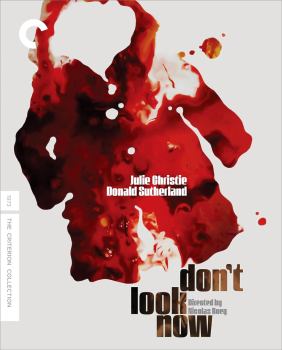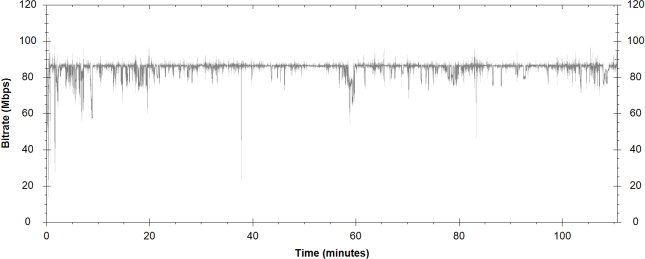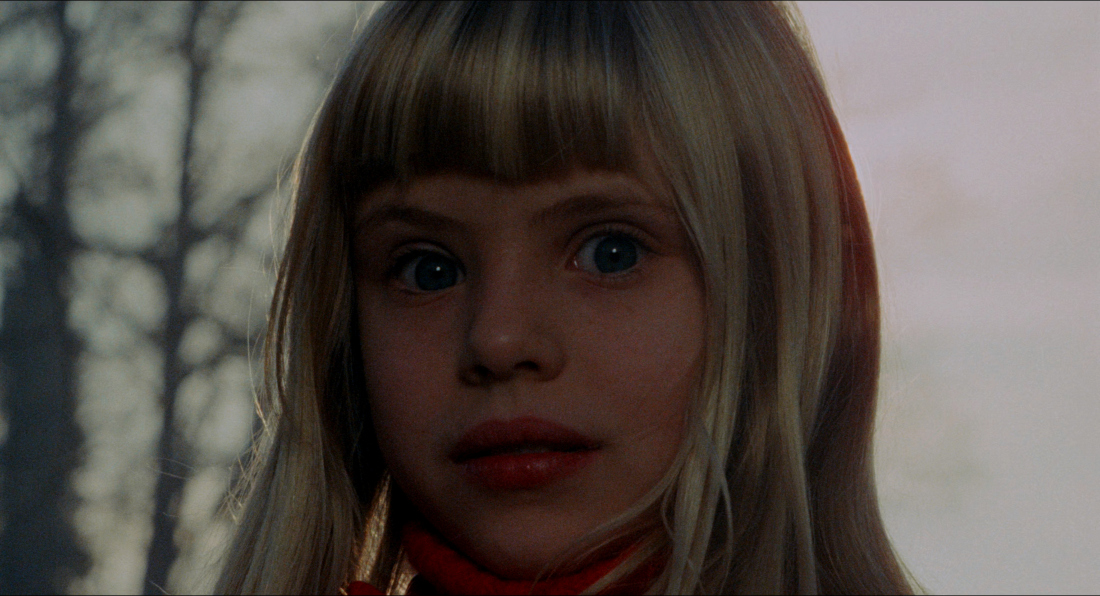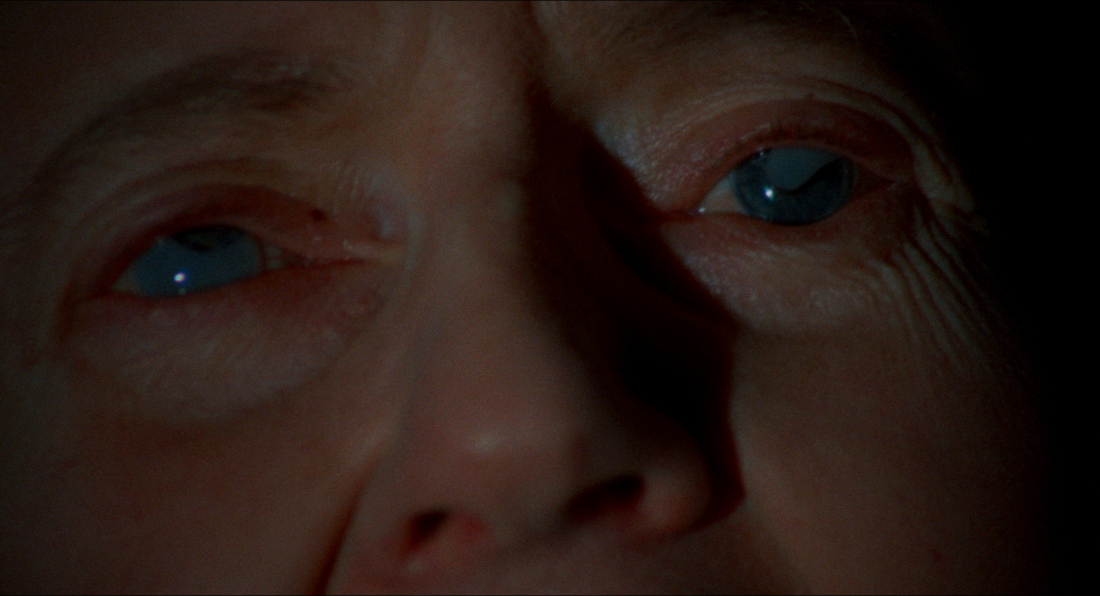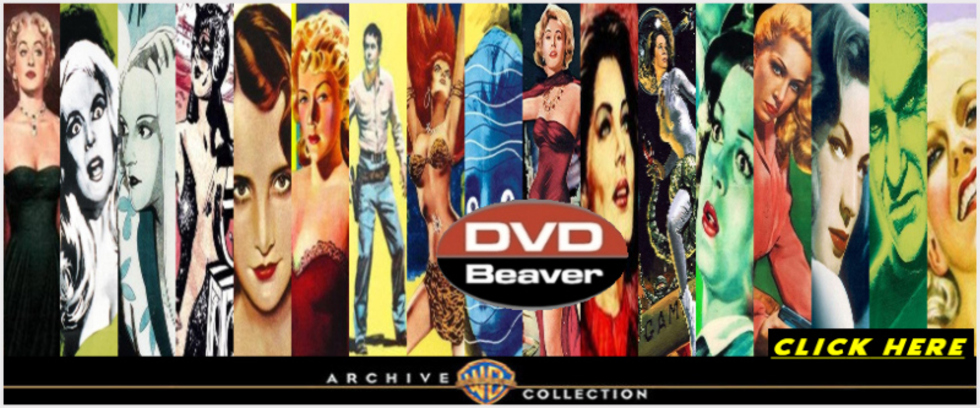|
Firstly, a massive thank you to our Patreon supporters. Your generosity touches me deeply. These supporters have become the single biggest contributing factor to the survival of DVDBeaver. Your assistance has become essential.
What do Patrons receive, that you don't?
1)
Our
weekly
Newsletter
sent to your Inbox every
Monday morning!
Please consider keeping us in existence with a couple of dollars or more each month (your pocket change!) so we can continue to do our best in giving you timely, thorough reviews, calendar updates and detailed comparisons. Thank you very much. |
![]()
![]()

![]()
![]()
|
Search DVDBeaver |
S E A R C H D V D B e a v e r |
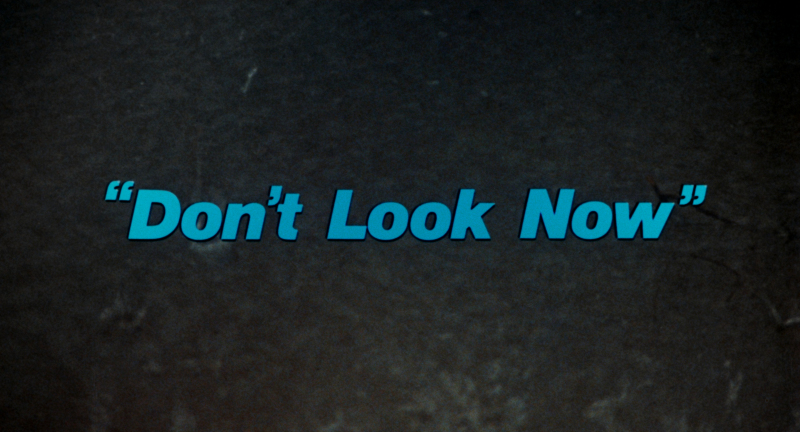
(aka "A Venezia... un dicembre rosso shocking")
|
Widely acclaimed as one of the greatest horror films ever made, Nicolas Roeg’s (The Man Who Fell To Earth, Bad Timing) masterful Don’t Look Now is based on Daphne Du Maurier’s shattering short story. Donald Sutherland and Julie Christie give career-best performances as John and Laura Baxter, an art restorer and his wife struggling to recover from the trauma of their daughter’s accidental drowning. To assuage their grief, the young British couple travel to wintry Venice, on a working holiday to restore a church. Once there, they get involved with two otherworldly sisters, Heather and Wendy (Hilary Mason and Clelia Matania), one of whom is a blind medium who insists she can get them in touch with their late daughter and warns them of danger. A truly original work that blends psychological thriller with a disturbing sense of the macabre, Don’t Look Now also offers a profound and poignant mediation on love and loss. Making evocative use of its disquieting, out-of-season setting, an emerging generation of directors (not least Steven Soderbergh) have cited the film as an influence, ensuring that its reputation as a modern classic continues to grow. *** A girl in a red raincoat, a boy on a red bike, the girl throwing a red ball into water, which reflects her red raincoat, which becomes fire by a cut from exterior to interior, where a book with a red cover is on the table, where the man watches a slide in which there is a red hood figure, cutting to the reflection of the girl with the red raincoat, cutting to interior again, where the woman is looking for her red label cigarettes, which is found by the man, who throws them to her, as the girl outside throws the red ball into the water, as the man inside tips a glass of water onto his slides, cutting himself, allowing blood to flow onto the slide of the red hooded figure, making him run out of the house as the girl in the red raincoat is drowning. And as the blood on the slide forms a whirlpool, so does the water as the man rises from below it with the lifeless girl with the red raincoat in his arms. So opens Nicholas Roeg’s masterpiece “Don’t Look Now”. One of the most beautifully constructed opening sequences ever, edited by Graeme Clifford, it does not only set up the theme of colour red – which throughout the film stalks the images – and of time / space disorder, linked by the colour red; Roeg even cuts in the cover of the book Beyond the fragile geometry of space, as if to stress how space, time and reality are connected in disorderly ways, a theme he so elegantly sets up thru editing, by constantly cutting back and forth between the outside and inside, and by inverting elements. The very first image of raid outside becomes light reflecting in glass spheres inside, as water outside becomes fire inside, as the woman’s tapping of her lips inside becomes the girls giggle behind her fingers outside, the boy looking for a splinter in his wheel mimics the woman searching for her cigarettes inside, and so forth. This being an intellectual montage, the images are not directly linked to create an idea, but more linked in a way, which appears unrelated, allowing for linkage by paranormal or mystic means. Both do play a significant role in the story. John is able to see things that not yet have happened, so does the blind sister, and Roeg sets up fate as a force, both by imagery of the laughing gargoyles and by events, such as the blind sister having visions during epileptic seizures, which in ancient times was thought to be either demonic possessions or visions evoked by the gods. In the scene, where John almost falls to his death, Roeg inserts the image of the blind sister laughing, who earlier warned Laura about her husband being in danger. “Don’t Look Now” is a masterpiece of psychological horror, and arguable Roeg’s best film. It is as fresh today as it was more than thirty years ago, as provocative, as intelligent. Its casting appears more and more perfect with the years, so does its editing and direction. |
Posters
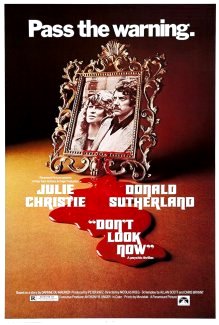 |
 |
 |
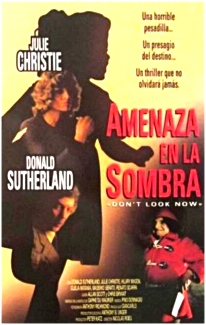 |
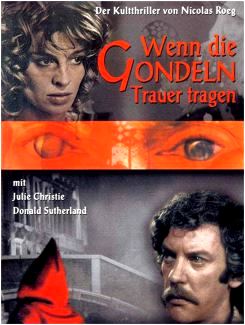 |
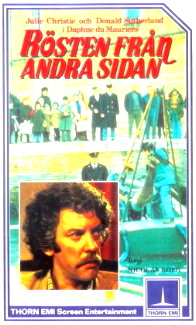 |
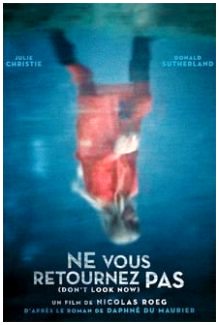 |
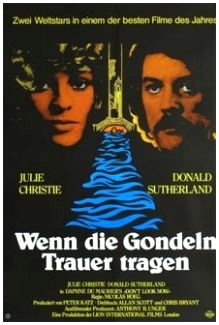 |
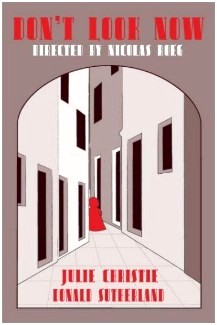 |
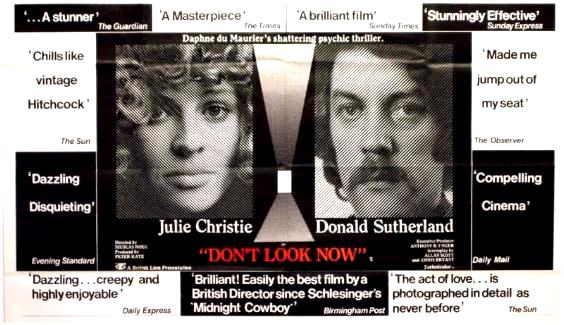 |
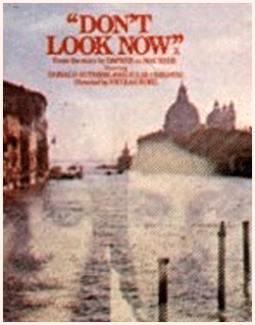 |
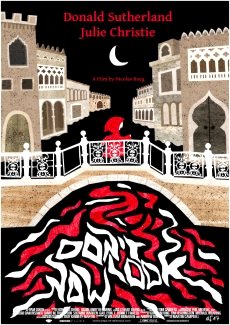 |
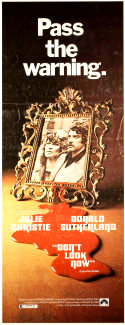 |
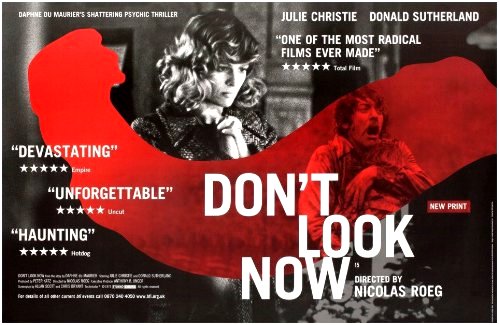 |
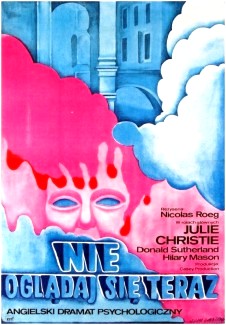 |
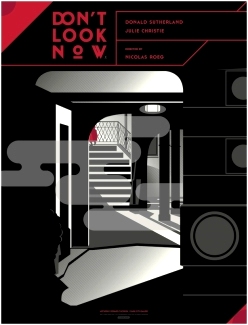 |
 |
Theatrical Release: October 11th, 1973
Reviews More Reviews DVD Reviews
Review: Criterion - Region FREE - 4K UHD
| Box Cover |
|
CLICK to order the Criterion 4K UHD from: Bonus Captures: There is also a STUDIOCANAL 3-disc steelbook 4K UHD edition and was available as part of a 4 disc STUDIOCANAL Collector's Edition, with 4K UHD , Blu-ray, Bonus Features and CD soundtrack, contains 5 artcards, poster, booklet etc. Reviewed by us: |
| Distribution | Criterion spine #745 - Region FREE - 4K UHD | |
| Runtime | 1:50:39.633 | |
| Video |
1.85:1 2060P
4K Ultra HD Disc Size: 85,236,437,856 bytes Feature: 84,061,189,632 bytes Video Bitrate: 85.23 Mbps Codec: HEVC Video |
|
|
NOTE: The Vertical axis represents the bits transferred per second. The Horizontal is the time in minutes. |
||
| Bitrate 4K Ultra HD: |
|
|
| Audio |
LPCM Audio English 1152 kbps 1.0 / 48 kHz / 1152 kbps / 24-bit |
|
| Subtitles | English (SDH), None | |
| Features |
Release Information: Studio: Criterion
1.85:1 2060P
4K Ultra HD
Edition Details: 4K Ultra HD disc • None
Criterion - Region 'A' - Blu-ray
• New conversation between editor Graeme
Clifford and film writer and historian Bobbie O’Steen (43:05)
Transparent 4K Ultra HD Case Chapters 12 |
|
| Comments: |
NOTE:
The below
Blu-ray
and
4K UHD
captures were taken directly from the respective
discs.
Now, I started to do Criterion captures but they look so similar to the 2019 StudioCanal 4K UHD that I thought better of investing the half-day of effort. I can say that the Dolby Vision HDR is liberally applied but the overall 2160P presentation is too close to the UK release that I might be hard pressed to tell the difference. Bitrates are very similar, both have extensive grain and deep, rich colors. Fabulous. The captures below were obtained from the 2019 StudioCanal.
This Criterion
4K UHD package includes a second disc
Blu-ray
- which appears
to be there February 2015 1080P edition with all of those extras (see
below.)
It is likely that the monitor
you are seeing this review is not an
HDR-compatible
display (High Dynamic Range) or Dolby Vision, where each pixel can be assigned with a wider
and notably granular range of color and light. Our
capture software if simulating the HDR (in a uniform manner) for standard
monitors. This should make it easier for us to review more
4K UHD titles in the
future and give you a decent idea of its attributes on your system. So our
captures may not support the exact same colors (coolness of
skin tones, brighter or darker hues etc.) as the
4K system at your home. But the
framing, detail, grain texture support etc. are, generally, not effected by
this simulation representation.
NOTE:
We have reviewed the following 4K
UHD packages to date:
Rosemary's Baby
(software uniformly simulated HDR),
The Last Wave
(no HDR),
The Train
(software uniformly simulated HDR),
The Trial
(software uniformly simulated HDR),
The Walkabout
(software uniformly simulated HDR),
Black Magic Rites,
The Night of the Hunted
(software uniformly simulated HDR),
The Rape of the Vampire
(software uniformly simulated HDR),
Gorgo
(software uniformly simulated HDR),
Akira Kurosawa's Dreams
(software uniformly simulated HDR),
The Man From Hong Kong
(software uniformly simulated HDR),
One False Move,
The Tall T
(software uniformly simulated HDR),
Cold Eyes of Fear (software uniformly simulated HDR),
Rules of the Game
(no HDR),
The Manchurian Candidate
(software uniformly simulated HDR),
After Hours,
Rain Man
(software uniformly simulated HDR),
The Changeling
(software uniformly simulated HDR),
The Night of the Hunter
(software uniformly simulated HDR),
12 Angry Men
(software uniformly simulated HDR),
Branded to Kill
(no HDR),
Picnic at Hanging Rock
(software uniformly simulated HDR),
Two Orphan Vampires,
The Shiver of the Vampires,
Drowning By Number
(software uniformly simulated HDR),
Serpico
(software uniformly simulated HDR),
Cool Hand Luke
(software uniformly simulated HDR),
The Seventh Seal
(software uniformly simulated HDR), The Maltese Falcon
(software uniformly simulated HDR),
Mildred Pierce
(software uniformly simulated HDR),
Tár
(software uniformly simulated HDR),
Marathon Man
(software uniformly simulated HDR),
Dazed and Confused
(software uniformly simulated HDR),
Three Colors: Blue
(software uniformly simulated HDR),
Invaders From Mars
(software uniformly simulated HDR),
Death Wish
(software uniformly simulated HDR),
The Taking of Pelham One Two Three,
The Cabinet of Dr. Caligari
(no HDR),
High Plains Drifter
(software uniformly simulated HDR),
Mystery Men
(software uniformly simulated HDR),
Silent Running
(software uniformly simulated HDR),
Dressed to Kill
(software uniformly simulated HDR),
The Power of the Dog
(software uniformly simulated HDR),
Escape From Alcatraz
(software uniformly simulated HDR),
I, the Jury
(no HDR),
Casablanca
(software uniformly simulated HDR),
In the Mood For Love
(NO HDR applied to disc),
The Werewolf vs. the Vampire Woman
(software uniformly simulated HDR),
Blow Out
(software uniformly simulated HDR),
Night of the Living Dead
(NO HDR applied to disc)
The audio
is offered in linear PCM mono in the original English
(24-bit). As Roeg mentions in an older commentary, it was by chance that
Pino Donaggio (Dressed
to Kill,
Blow Out,
Body Double,
Blow Out,
Carrie,
Raising Cain)
was able to do the score as he was teaching in Venice at the time.
It is used sparingly in the film, but subtly present at times in a
'free-form' expression. The music has Emidio Remigi and Vito
Pallavicini's
Salvatore,
Lu Primmo Ammore
+
I Colori di Dicembre
written by Donaggio. It is flat, a shade hollow at times, but has some
resonant bass depth.
There are optional English (SDH) subtitles and as with all
4K UHD
discs, this is Region 'Free' playable worldwide. Criterion's second disc
Blu-ray
is Region 'A'-locked.
There are no
extras on the
4K UHD disc.
There is no Roeg commentary
as found on the 2011 Optimum
Blu-ray but
Criterion include a new 3/4 of an hour conversation
between editor Graeme Clifford and film writer and
historian Bobbie O’Steen recorded by Criterion in
November 2014. They talk about working with director
Nicolas Roeg and the innovative cutting style used for
the film. “Don’t Look Now,” Looking Back, is a
20-minute 2002 documentary featuring Roeg, Clifford, and
cinematographer Anthony Richmond - also found on the
Optimum
Blu-ray
- as is Death in Venice, a, 17-minute, 2006
interview with composer Pino Donaggio who discusses
writing music for Don't Look Now. Something
Interesting, is a new 1/2 hour piece on the writing
and making of the film, featuring recent interviews with
Richmond, actors Julie Christie and Donald Sutherland,
and co-screenwriter Allan Scott discuss Nicolas Roeg and
the writing and shooting of Don't Look Now.
Nicolas Roeg: The Enigma of Film, is another new
piece on Roeg’s style, featuring recent interviews with
filmmakers Danny Boyle and Steven Soderbergh who discuss
his influence on their careers. It runs almost
15-minutes. There is a 47-minute Q&A with Roeg from 2003
at London’s Ciné Lumière hosted by film writer Paul
Ryan. It followed a screening of Don't Look Now.
There is a trailer and the package contains a liner
notes booklet with an essay by film critic David
Thompson.
The
Criterion edition does not have the accoutrements of the StudioCanal
4K UHD, however it is still a magnificent
edition - fully worthy of a double-dip if you had the older
Blu-ray.
My feelings on Don't Look Now
have not changed - it is such a
deep film experience that you can get something new out of each time you
view it. It has parental bereavement issues, mystery and horror elements and
is
so underplayed at times that it keeps you at a very high level of suspense.
As the extras can testify Roeg's 'language of color' is brilliant and unique
- remaining an integral part of the narrative. The
4K UHD image is
out-of-this-world and there are new highly valuable extras. It couldn't
happen to a more relevant film. This is one of my absolute favorite
4K UHD packages to date.
I imagine all the greatest cinema getting this overwhelming treatment -
Antonioni, Bresson, more stylistic
Giallo
(of which, Don't Look Now does have links) etc. etc.. There can be no
excuse for Home theater
aficionados not to have this in a coveted part of their digital library. |
Menus / Extras
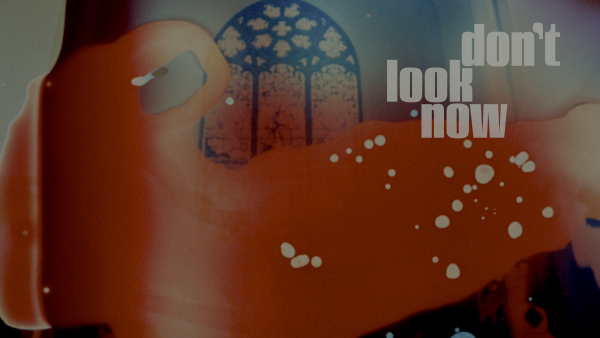 |
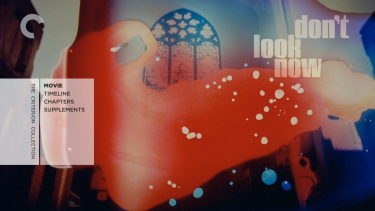 |
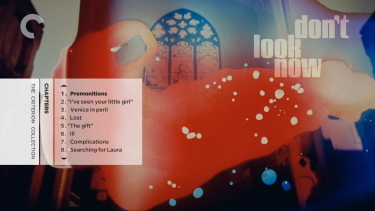 |
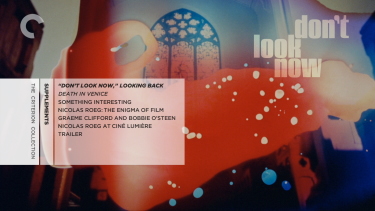 |
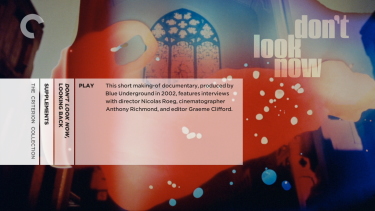 |
 |
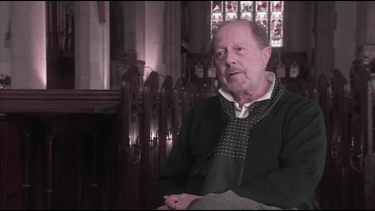 |
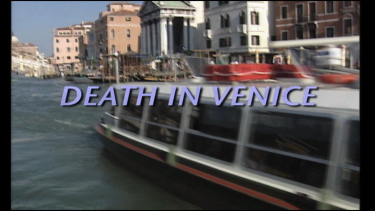 |
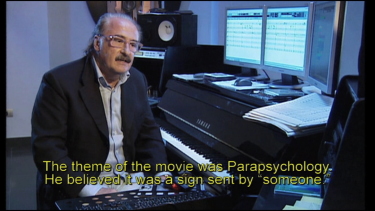 |
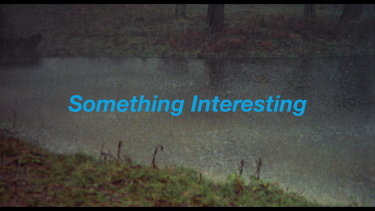 |
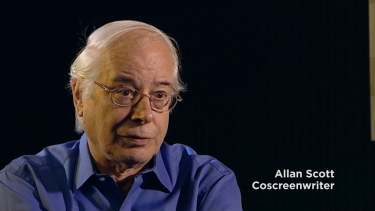 |
 |
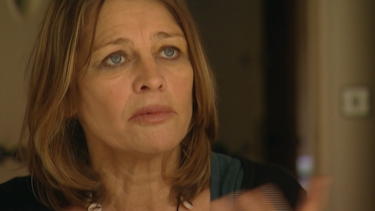 |
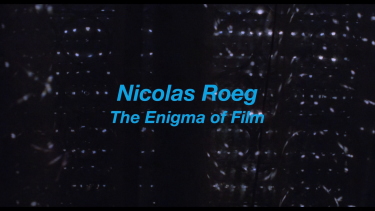 |
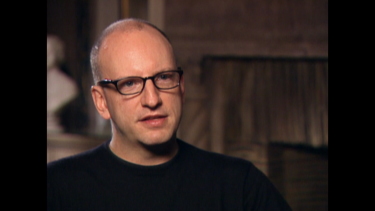 |
CLICK EACH BLU-RAY and 4K UHD CAPTURE TO SEE IN FULL RESOLUTION
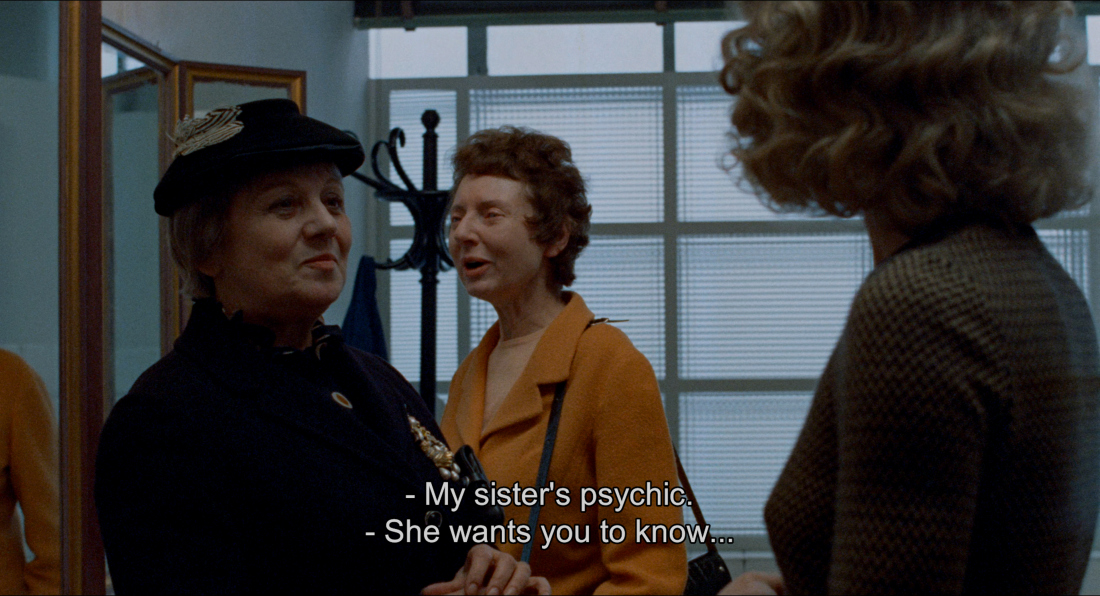 |
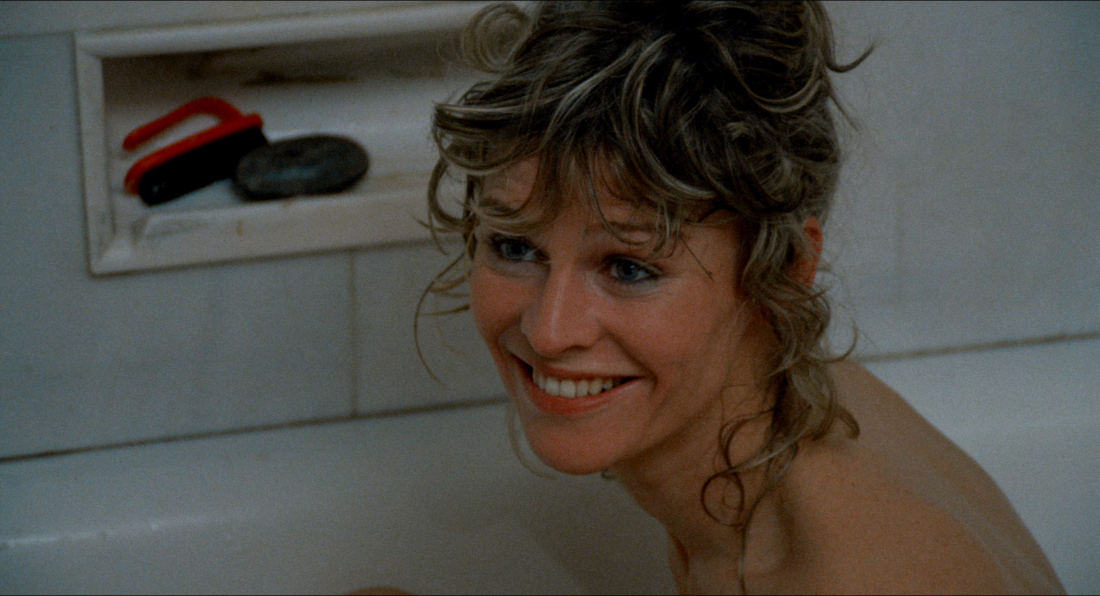 |
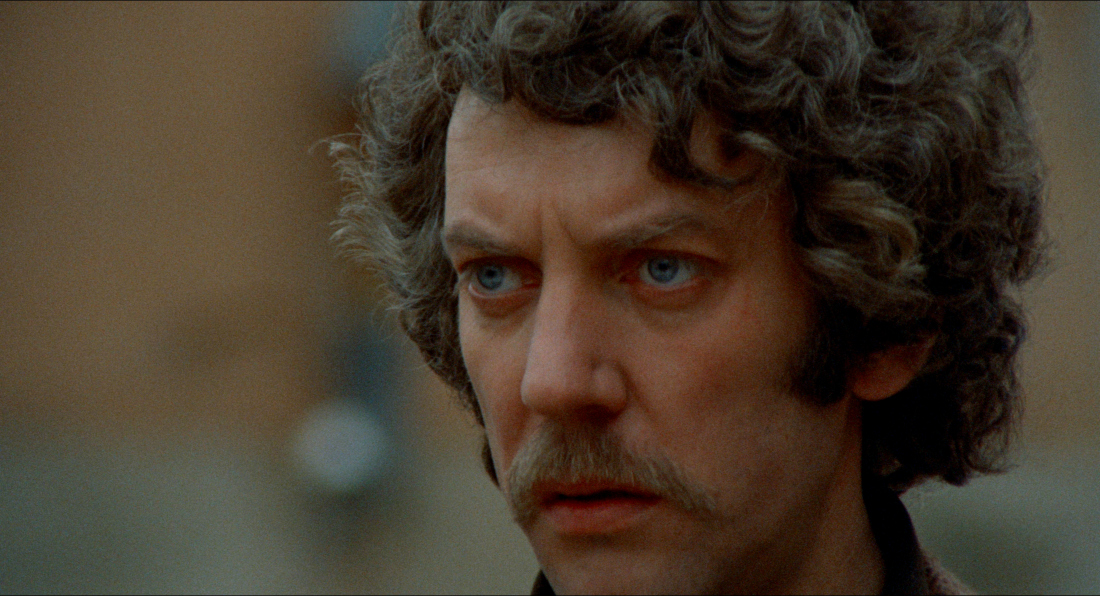 |
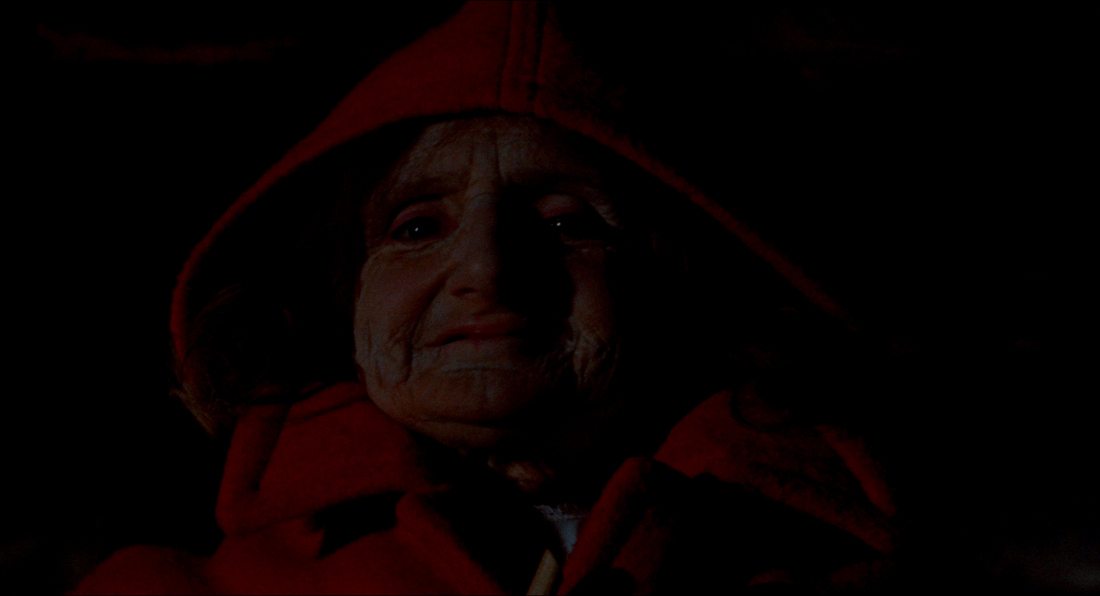 |
More full resolution (3840 X 2160) 4K Ultra HD Captures for Patreon Supporters HERE
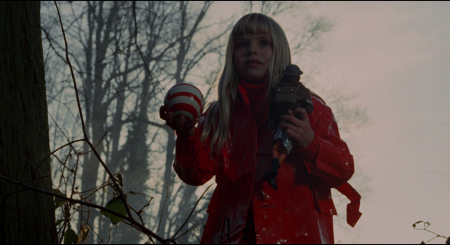 |
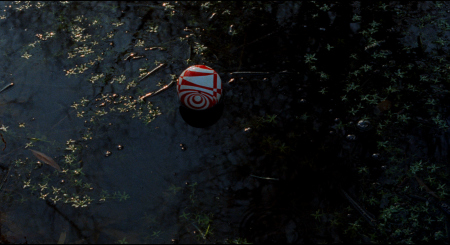 |
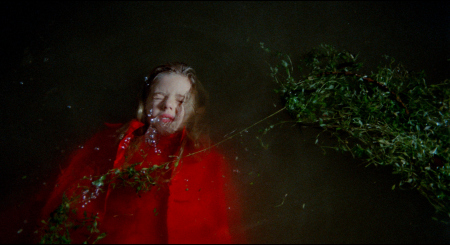 |
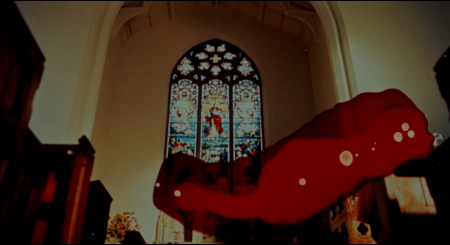 |
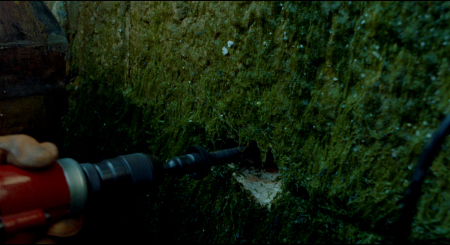 |
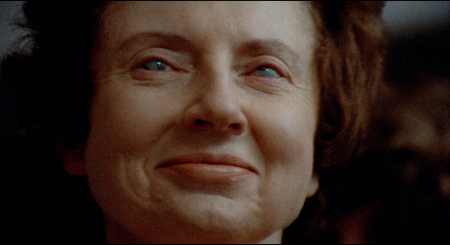 |
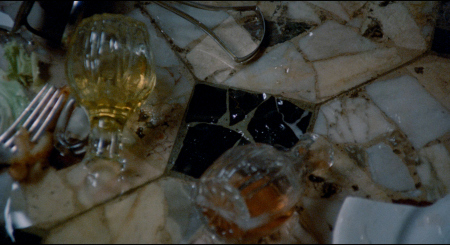 |
 |
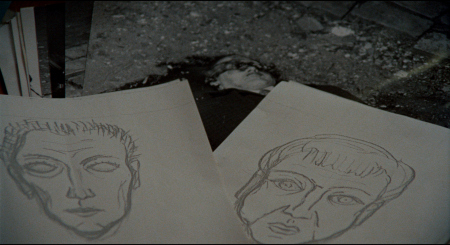 |
| Box Cover |
|
CLICK to order the Criterion 4K UHD from: Bonus Captures: There is also a STUDIOCANAL 3-disc steelbook 4K UHD edition and was available as part of a 4 disc STUDIOCANAL Collector's Edition, with 4K UHD , Blu-ray, Bonus Features and CD soundtrack, contains 5 artcards, poster, booklet etc. Reviewed by us: |
| Distribution | Criterion spine #745 - Region FREE - 4K UHD | |
![]()
![]()

![]()
![]()
|
Search DVDBeaver |
S E A R C H D V D B e a v e r |




